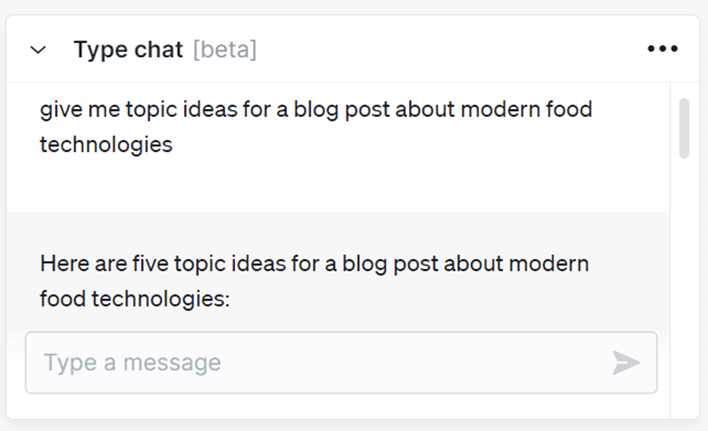Content marketing has emerged as a heavyweight champion in successful marketing strategies. In the past couple of years, 91% of marketers say they have achieved success with their content marketing activities.
The value is just as clear in the tech B2B space: 71% say it has become more important to their business in the last 12 months. When done right, it engages customers, wins trust, and generates leads that drive revenue and ROI. Email newsletters, for example, have the power to sway nearly 60% of B2B buyers in their decision-making process.
But when mistakes happen, it can all come crashing down and undermine trust, authority, and expertise.
The goal seems simple: create high-quality content that adds value. But getting the ball to the back of the net can be much harder than it looks. A lack of resources, together with the ability to consistently create the right content that differentiates their products/services, are the biggest challenges right now.
Those obstacles will likely remain in play, but the good news is B2B tech businesses can overcome common mistakes that are standing in the way of their content marketing success. Here are 5 of the biggest ones and how you can avoid them:
1. Not knowing who you are talking to
You can’t create the right type of content if you have no idea who exactly you’re making it for or why they need it.

How to avoid the mistake: Research and understand your audience to create a buyer persona
Rule one of all marketing is that you need to understand and communicate specifically with your audience. And the proof, as they say, is in the pudding: 79% of successful marketers say the biggest factor in hitting their targets is knowing their audience.
The messages and information you are putting out there about your business are all about their interests and needs. If you are going to provide materials that your readers want to read, you need to write directly to them.
The most common way to get a feel for the intricacies of your audience is to create buyer personas.
Buyer personas are like small case studies on the companies and more specifically, people within those organisations who make up your customer base. They are based on in-depth research and real data that you collect. You want to discover who your customers are, what they want and what they are looking for from you. Make notes on their background, demographics, goals, challenges, fears, objections… you name it.
If you create content without knowing who you’re talking to, the chances are that you won’t reach your audience, let alone start a meaningful conversation with that audience. Think of it as going to a party and just speaking out loud to the room, hoping that someone will pay attention and start a conversation.
Buyer personas provide insight you will use as a basis for all of your marketing efforts, from advertising to emails and blog posts. If your budget does not run to formal research to understand buyer personas, at least engage with frontline teams to understand your audiences, and create a rough image of those your campaign seeks to address.
2. Jumping into content creation without a strategy in place
Creating content without a strategy is like trying to row a boat with a feather – it’s not going to get you very far. Knowing who your audience is and why you’re creating content for them is the foundation, but every campaign – whether you’re training for a marathon, contesting an election, or running a customer programme – needs to be built upon a plan of attack.
How to avoid the mistake: Put pen to paper – or cursor to Word document – and write down a clear roadmap
There need to be goals in place, a system to analyse and test if those goals have been met, and of course the day-to-day, month-to-month plans to achieve said goals. Think of a content marketing strategy as a strategic outline of your objectives, customer needs, and implementation roadmap.
A clear, articulated, and – most importantly – written-down strategy is one of the critical factors that separates successful marketers from their peers.
And creating a smart and effective content strategy is not rocket science. It can be done simply and efficiently if you know how.
3. Not keeping it simple
The tech B2B world is often characterised by complex technologies, use cases and implementations. Some of the tech B2B companies out there are bringing some ground-breaking technologies with remarkable capabilities to market. They are naturally keen to tell everyone exactly what they have achieved, and how.
This is one of the most common mistakes tech B2B marketers make.
Put simply, tech B2B buyers want to know what a solution can achieve for them.
How to avoid the mistake: Imagine you’re explaining the product, service, or solution to someone who has never heard of it

It’s important that you don’t get caught in the trap of focusing on the complex technical details of your product or service. Audiences engage much better when you simplify a concept and present it confidently and in a manner that your target persona is comfortable with – another reason why you should always start with the audience.
Sadly, being in love with one’s own technology does not automatically guarantee that others will see it the same way, too.
4. Being afraid to embrace emerging tech like AI in a smart way
Everyone’s talking about AI. And no matter what side of the fence you sit on, the reality is that it is going to have some impact on what you do. Successful marketers are already using AI content tools for content inspiration and idea generation, to outline and research content, and even to optimise and improve content while they are writing it.
AI tools can help remove a lot of the manual, time-consuming processes associated with creating content and allow marketers to focus on what’s important: creating the types of content that drive results and maximise ROI.
How to avoid the mistake: Use AI tools wisely to make the content process more effective
Critical to bear in mind is that AI is still in its infancy and doesn’t yet have clear standards or guidelines to regulate its use and help ensure its being used ethically and in the right way. That means you need to be careful in your approach and use it to streamline the content process rather than take over content creation.
Wholly AI-generated content is a major no-no and creates problems of its own. In fact, 55% of marketers say accuracy concerns deter them from using it, 44% are worried about quality control, and 30% about legal and copyright issues. It can also harm SEO and brand reputation if content reads or sounds like it was created by a robot.
General rule of thumb: use AI to get the process started – such as blog topic ideas around a particular theme – but add the human touch and use your own unique insights to create content that entertains, informs, engages, and drives leads.

5. Not having a dedicated team of content specialists
Another common mistake that marketers make in tech B2B is giving product managers and engineers the responsibility for content creation. This attitude is understandable from one perspective – the technology is complex, and so it is possibly easiest to ‘hear it from the horse’s mouth’, as they say.
However, this approach tends to create unoptimised and inconsistent output. Staff are already busy with their core job responsibilities, and the reality is that writing takes time. So that writing task often gets pushed to the bottom of the list. It is also often done from a very text-centric and inside-out perspective.
How to avoid the mistake: invest in the right content talent
Content for marketing is a unique and specialised field and should have a dedicated team handling it, whose focus is not on ‘what do I want to say about this product’, but rather on ‘what will our audiences find most compelling?’ If you don’t have a dedicated in-house team, it’s time to outsource.
The fact is that 75% of large companies are outsourcing content creation work . No matter the reason, do research and pick a specialist tech partner that has experience and a track record in your sector and can be a truly value-added partner.
If you want to chat about any of the pitfalls we’ve discussed briefly in this article, or if you want to talk about letting us deal with the other half of the battle… get in touch at hello@isolinecomms.com.



